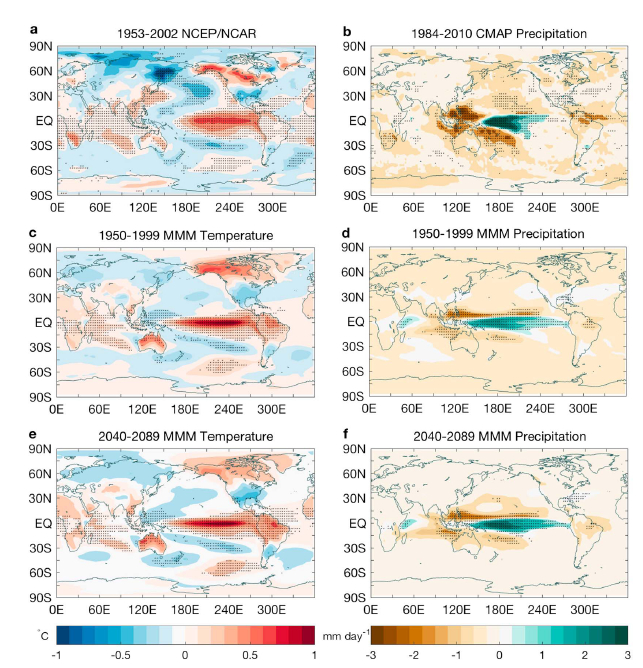Future Changes to El Niño–Southern Oscillation Temperature and Precipitation Teleconnections
Potential changes to the El Niño–Southern Oscillation (ENSO) resulting from climate change may have far reaching impacts through atmospheric teleconnections. Here ENSO temperature and precipitation teleconnections between the historical and high-emission future simulations are compared in 40 models from phase 5 of the Coupled Model Intercomparison Project. Focusing on the global land area only, we show that there are robust increases in the spatial extent of ENSO teleconnections during austral summer in 2040–2089 of ~ 19% for temperature and ~ 12% for precipitation in the multimodel mean (MMM), relative to the 1950–1999 period. The MMM further shows that the expansion of ENSO teleconnection extent is at least partly related to a strengthening of ENSO teleconnections over continental regions; however, a consistent strengthening is not found across the individual models. This suggests that while more land may be affected by ENSO, the existing teleconnections may not be simply strengthened.

Figure 1. Regression of normalized ENSO index (defined in section 2.2) on global surface temperature and precipitation. (a) NCEP/NCAR reanalysis temperature
observations (1953–2002), (b) CMAP precipitation observations (1984–2010), (c and d) MMM historical simulations (1950–1999), (e and f) MMM RCP8.5
simulations (2040–2089). Stippling in Figures 1a and 1b shows significant regressions at p < 0.05. Stippling in Figures 1c–1f shows significant teleconnections in the
MMM (where 25 out of 40 models agree on the location of significant teleconnections, corresponding to a significance level of p < 0.1).
Reference:
Perry, S. J., McGregor, S., Gupta, A. S., & England,M. H. (2017), Future changes to El Niño-Southern Oscillation temperature and precipitation teleconnections.Geophysical Research Letters,44,10,608–10,616, https://doi.org/10.1002/2017GL074509.